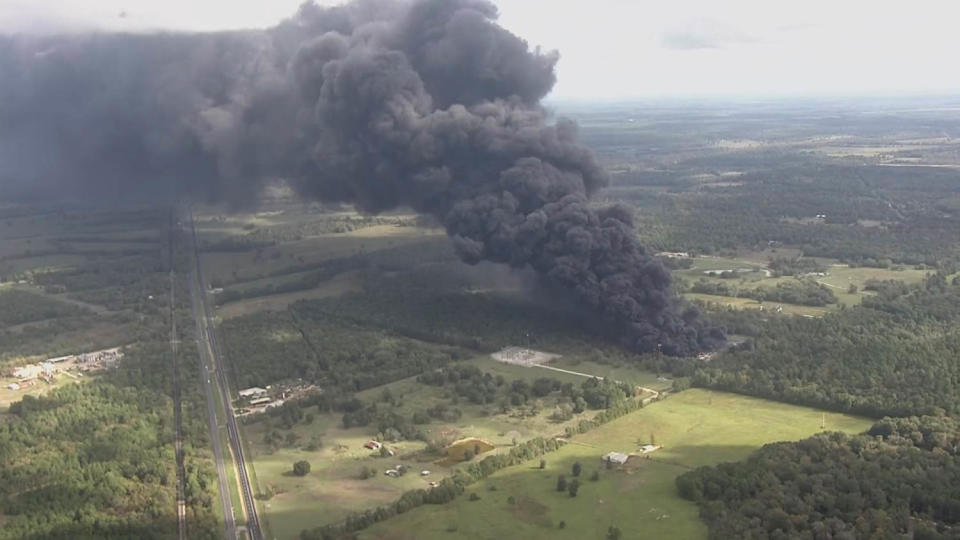Texas chemical plant explosion sparks large fire; evacuation and shelter-in-place orders issued
An explosion triggered a large fire at a chemical plant in Shepherd, Texas, sending massive plumes of black smoke into the sky.
The "plant explosion" and the following chemical fire unfolded Wednesday morning at Sound Resource Solutions, which makes solvents for glue and paint remover, the San Jacinto County Office of Emergency Management said.
Geoff Harfield, the president of Sound Resource Solutions, said at a news briefing Wednesday that one employee was injured and was being treated for minor burns. He said that the company has been a part of the community since 2013 and employs almost 40 people and that all, except the injured employee, are home and safe.
“First responders have done an amazing job. They’ve been very cautious. They’ve made sure everyone is safe,” he said.
The blaze prompted the evacuation of a private school on Farm-to-Market Road 1127 and officials to issue a 5-mile shelter-in-place warning. By 10:30 a.m. local time, that radius had been reduced to 1 mile.
Officials said in a news briefing at 1 p.m. local time that the fire was contained. Authorities said that air monitoring continues and that so far no chemicals had been detected.

Highway 59 was closed because of the explosion, and locals were urged to use alternative routes.
The Polk County Emergency Management Office said the plume of smoke from the explosion was heading toward the Livingston area and advised locals to shelter in place and turn off HVAC systems in homes and business “immediately.”
“At this time, the effects of the chemical in the air are unknown,” Polk County officials said.
The Livingston Police Department similarly urged residents and businesses to shelter in place and turn off air conditioning systems until further notice.
The Polk County Emergency Management Office said the affected plant houses chemicals known to cause “acute toxicity, carcinogenicity, and reproductive toxicity, and may cause serious eye damage or eye irritation, skin corrosion or irritation, aspiration hazard, and organ toxicity.”
This article was originally published on NBCNews.com

